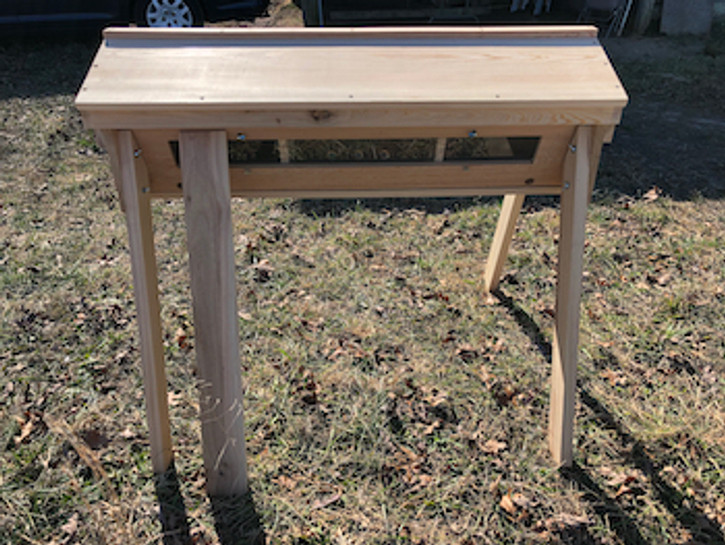About having an observation window in your hive…
One of the beauties of having an observation window in your hive is that… well – bees are beautiful! So, it’s great to be able to watch them at work inside the hive, it’s like magic! And it’s great too that you can check the level of a feeder inside the hive without cracking the lid. And you can see whether they have built comb on all available bars, so you can easily tell when bars need to be added for them to grow onto. All great stuff. And for the cool factor, it’s just really hard to beat having a window in your beehive.
But there are risks as well. The first risk is that if you only ever inspect your bees through the observation window – you are missing the most important part of any inspection, and that is to see the contents of the cells of the combs. The view through the window only reveals the edge of the bees’ combs, not the faces of the combs, and in truth, that’s where all the action is! To do a thorough, thoughtful, relevant inspection of your hive requires opening the hive, and gently lifting each bar to inspect both sides of each comb.

The video above demonstrates how to safely turn a natural beeswax comb in order to see the "back" side during a bar-by-bar inspection. It's not hard!
And just what should you see when inspecting? What is revealed when you look into the combs in your hive will be determined by the age of the hive, and the season. A brand new hive is busy building new comb, so that there are cells for the queen to lay eggs into. This is what we call brood comb. The eggs then hatch into larvae, and soon they are capped, becoming pupae, causing beekeepers to oooh and aaaah about the queen’s beautiful laying pattern. The beekeeper who looks into the cells of the brood combs in their hive will see these things – eggs, larvae, and pupae – and know whether their hive is thriving.
A hive during a honey flow will build beautiful fresh white comb and fill it with honey. This comb is quite new, so it is usually soft and somewhat fragile. You can see that it is fresh and white through the window – and you can also see if the bees needed to attach it to the sides of the hive for support. When they do that, you can often even see the honey in the cells through the window! Now you also know that in order to move that comb, you will need to detach it from the glass and that you should check the other side of the hive too for possible attachments. There’s not much to see on a bar of capped honey, so there’s little need to lift it from the hive, but once you’ve detached it, you can simply slide it over gently, out of the way, in order to inspect the rest of the hive.
An important thing to know about observation windows is that they should never be left open for extended periods of time. Two or three minutes is more than adequate to ooh and ahh a bit, check the feeder level, verify the number of bars available to the bees for building comb on, and to look for wax attachments. The rest of the time, the window should be covered with its shutter, keeping the interior of the hive dark.
So have fun with your observation window, and avail yourself of the information it provides so conveniently, but be sure not to skimp on in-depth, bar-by-bar inspections every week to ten days. That’s how you get real information about the health of your bees and the status of your hive. Enjoy!

